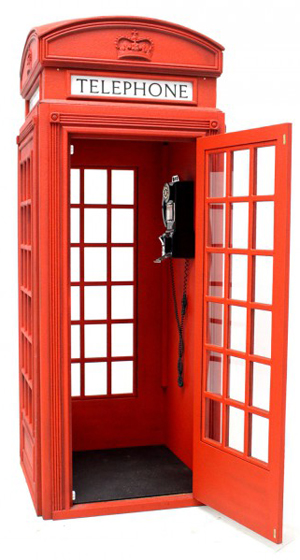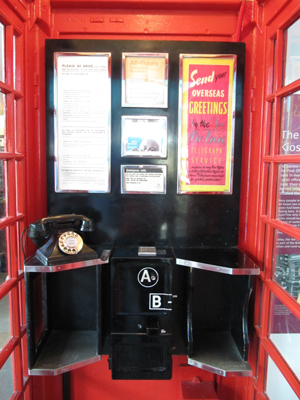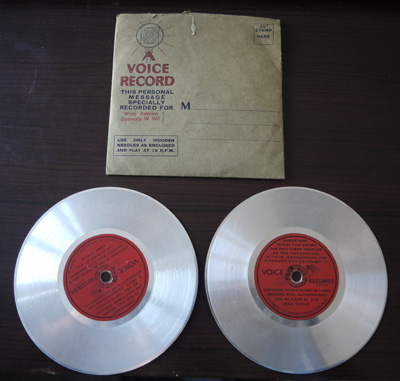




Back to the Victorians calendar




 There were two inventions this year that had a profound effect on all our lives and still do. Both inventions happened in the United States of America but the inventions soon came into use in England. As with all inventions, it is difficult to say who actually invented something as different people were working on the ideas at the same time.
There were two inventions this year that had a profound effect on all our lives and still do. Both inventions happened in the United States of America but the inventions soon came into use in England. As with all inventions, it is difficult to say who actually invented something as different people were working on the ideas at the same time.
It is generally agreed that a Scotsman, living in the USA, called Alexander Graham Bell invented the first telephone, a device which allowed two people to speak to each from a long distance apart. This is not a science website so all I will say is that a telephone converts sound into electronic signals which, in old days, travelled along a cable and then replays those signals in a form the receiver can understand; words.
 In 1879 the first telephone exchange opened in Britain. This allowed people in one area to phone someone else in the same area. It was operated, initially, by young men and the caller would dial the exchange, ask for the number they wanted and then be connected by the operator to the other person. After a while the young men were replaced by women who were far more efficient and reliable. The operator would make the connection by plugging a wire into a socket in front of her. The picture shows operators going about this work during the war and wearing tin hats as protection against falling debris during bombing raids.
In 1879 the first telephone exchange opened in Britain. This allowed people in one area to phone someone else in the same area. It was operated, initially, by young men and the caller would dial the exchange, ask for the number they wanted and then be connected by the operator to the other person. After a while the young men were replaced by women who were far more efficient and reliable. The operator would make the connection by plugging a wire into a socket in front of her. The picture shows operators going about this work during the war and wearing tin hats as protection against falling debris during bombing raids.
In January 1880 the first trunk line was opened which allowed people to make calls to a different area than that covered by their exchange.
The first line was between Leeds and Bradford in West Yorkshire. This development meant that a circuit connected the two telephone switchboards in Leeds and
Bradford, thereby allowing access to several extension lines at once. This was a method that would eventually be repeated across the country.
This method continued until the late 1950's, so yes, I experienced it. It then became automatic so people could dial direct to another area so
operators were no longer needed to connect these calls. It was used by the Queen in 1958 when she made a call to Edinburgh from Bristol, a distance of over
300 miles. Her call lasted two minutes five seconds and cost 10d (4p in today's money. The system, known as Subscriber Trunk Dialling, was in use across the
whole country by 1979. It meant that all areas had to have a unique code for people to dial and is the same system we use nowadays. You may know the major codes.
These are
- 01 London
- 021 Birmingham
- 031 Edinburgh
- 041 Glasgow
- 051 Liverpool
- 061 Manchester
From September 5th 1959 people were able to make these “trunk” calls from public call boxes and the Deputy Lord Mayor of
Bristol phoned the Lord Mayor of London from a telephone box, apparently dialling the number himself. Who's a clever boy.
However, as with everything when it becomes automatic, this new system resulted in many job losses. It was estimated that 25,000 telephone operators
lost their jobs between 1960 and 1970. Most of them would have been female.
 Public telephones, usually enclosed in a red telephone box, were first introduced in1925 and calls were connected by an operator. To stop you losing
your money if the person you were calling wasn't there, the phones had two buttons, cleverly known as button A and button B, because that was the letter stamped on
them.
Public telephones, usually enclosed in a red telephone box, were first introduced in1925 and calls were connected by an operator. To stop you losing
your money if the person you were calling wasn't there, the phones had two buttons, cleverly known as button A and button B, because that was the letter stamped on
them.  You first put your money in a slot and an operator answered and you told her the number you wanted or then dialled it if it was local. You then pushed Button A to deposit the coins and make the
connection. If a call could not be connected for some reason, or if there was no reply, Button B was pushed and all the coins were returned. Clever eh? The red boxes
began to be replaced in 1985. Are there any still around near you?
You first put your money in a slot and an operator answered and you told her the number you wanted or then dialled it if it was local. You then pushed Button A to deposit the coins and make the
connection. If a call could not be connected for some reason, or if there was no reply, Button B was pushed and all the coins were returned. Clever eh? The red boxes
began to be replaced in 1985. Are there any still around near you?
Telephones also looked very different in those days. The photos below show a phone from 1920, one from 1955 and one from 1970's. Did I use these? In the words of Meatloaf (ask a parent), two out of three ain't bad.

At the same time as Bell was doing his work another guy, called Thomas Edison was also working on his way of transmitting
speech. He came up with a device that could record speech. This was known as the phonograph or gramophone. In this case, non-scientifically, the sounds were etched
or grooved onto a cylinder or disc. To play the sound back, the cylinder or disc is then rotated and a needle was used to trace the groove and, by being vibrated,
reproduces the original sound. This is far too clever for me.
 However, pretty soon after these inventions, telephones and
gramophones were being sold to the wealthy in England. Some people were recording music and plays onto the discs, which became known as records, and people could
hear music in their own homes that had been recorded somewhere else.
However, pretty soon after these inventions, telephones and
gramophones were being sold to the wealthy in England. Some people were recording music and plays onto the discs, which became known as records, and people could
hear music in their own homes that had been recorded somewhere else.
And here is my own little contribution to history. These two “records” contain, I believe, recordings made by my grandmother, my mother and my mother's
sister when they were on holiday, possibly in 1933, in Margate. They went into a booth and talked into a microphone and were recorded on to a disc which they then
took home and could be played on a gramophone. My task now is to find someone with a gramophone and record for you what is on these records.
I haven't heard them for over 50 years so it will be a bit emotional when I do. What is more my grandmother died in 1955 and it will be amazing to hear
Forward to 1877AD

